Project Concept
The project’s primary goal is to provide food for 50 Martian settlers using a plant-based diet. We defined the plants’ attributes and categorised them according to the different aspects of food production, oxygen, psychological and medical support, and radiation protection, all of which consider daylight requirements, farming methods, and human needs.

.
.

.
.
.
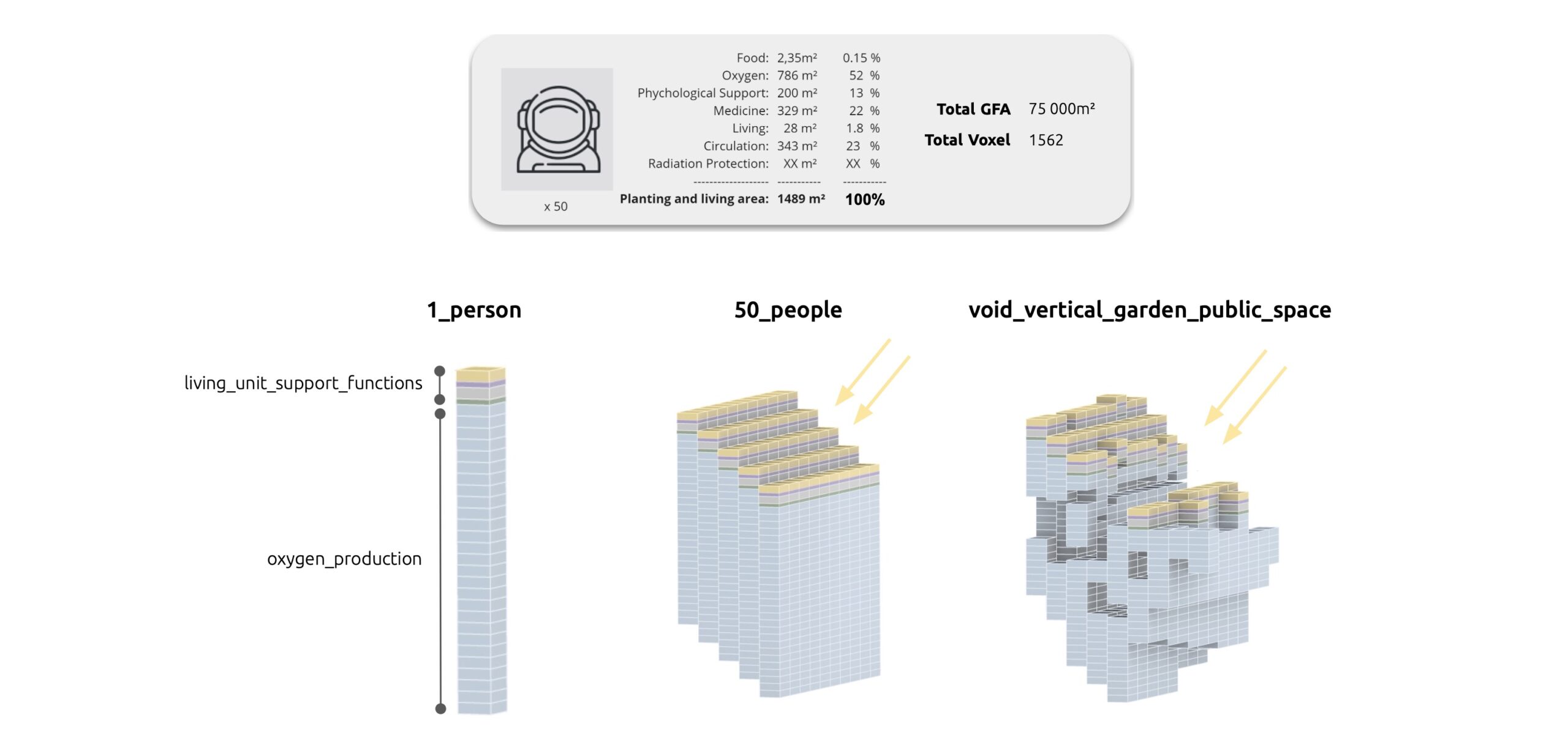
.
.
.
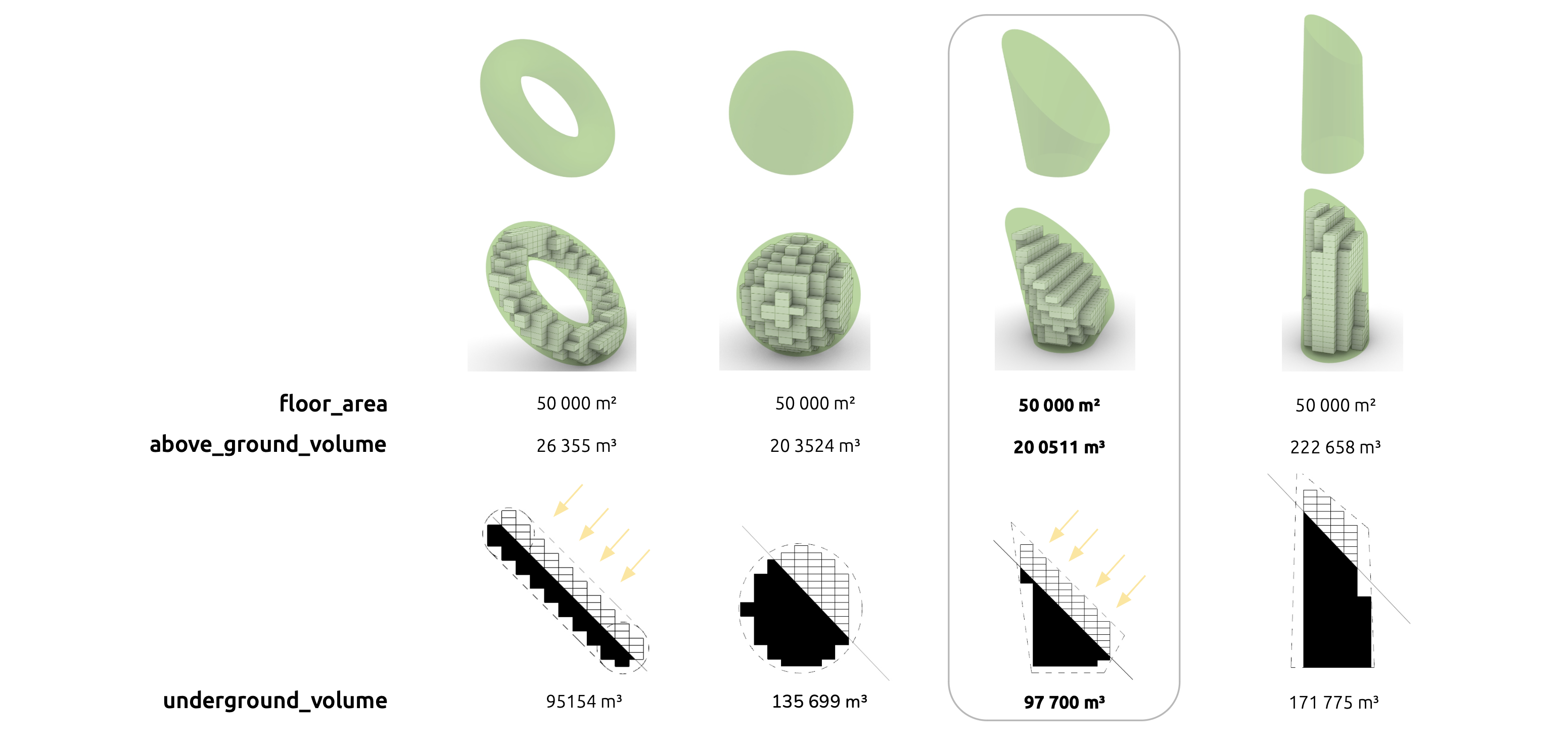
.
We use massing and voxelization strategies to ensure the area we need and to modularize our unit.
A cone shape provides a balance of positive/negative space.
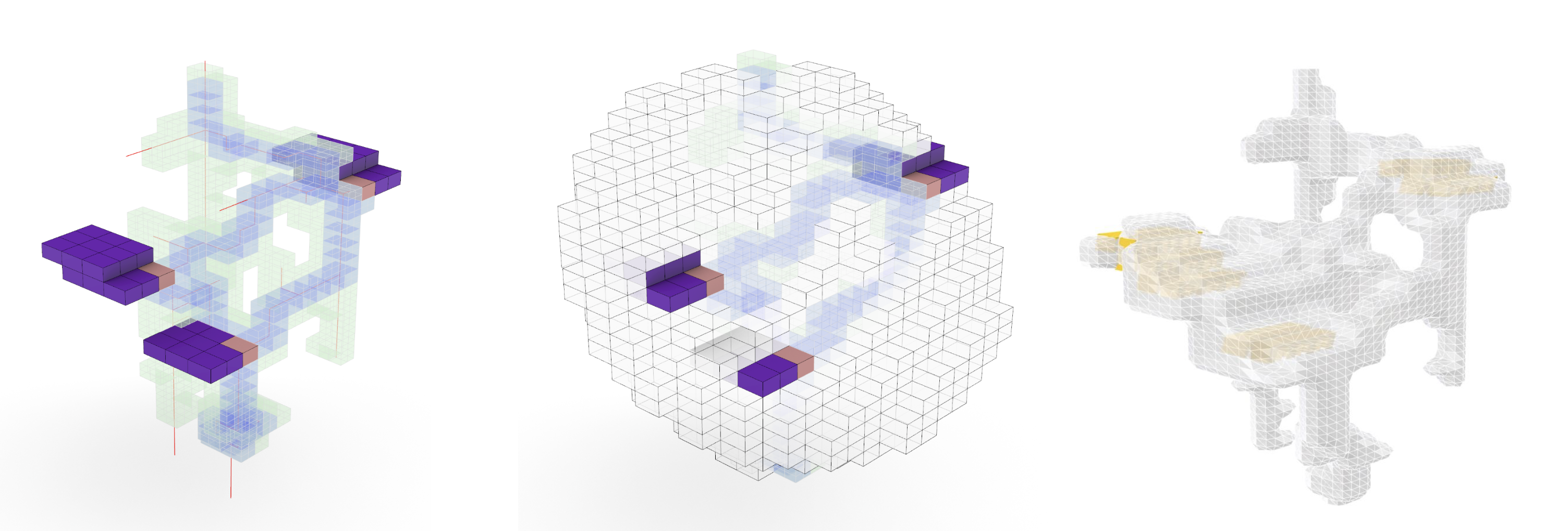
In the process of functional distribution,” the “shortest path” is used to define the circulation voxels. and the final form of the envelope is shown.
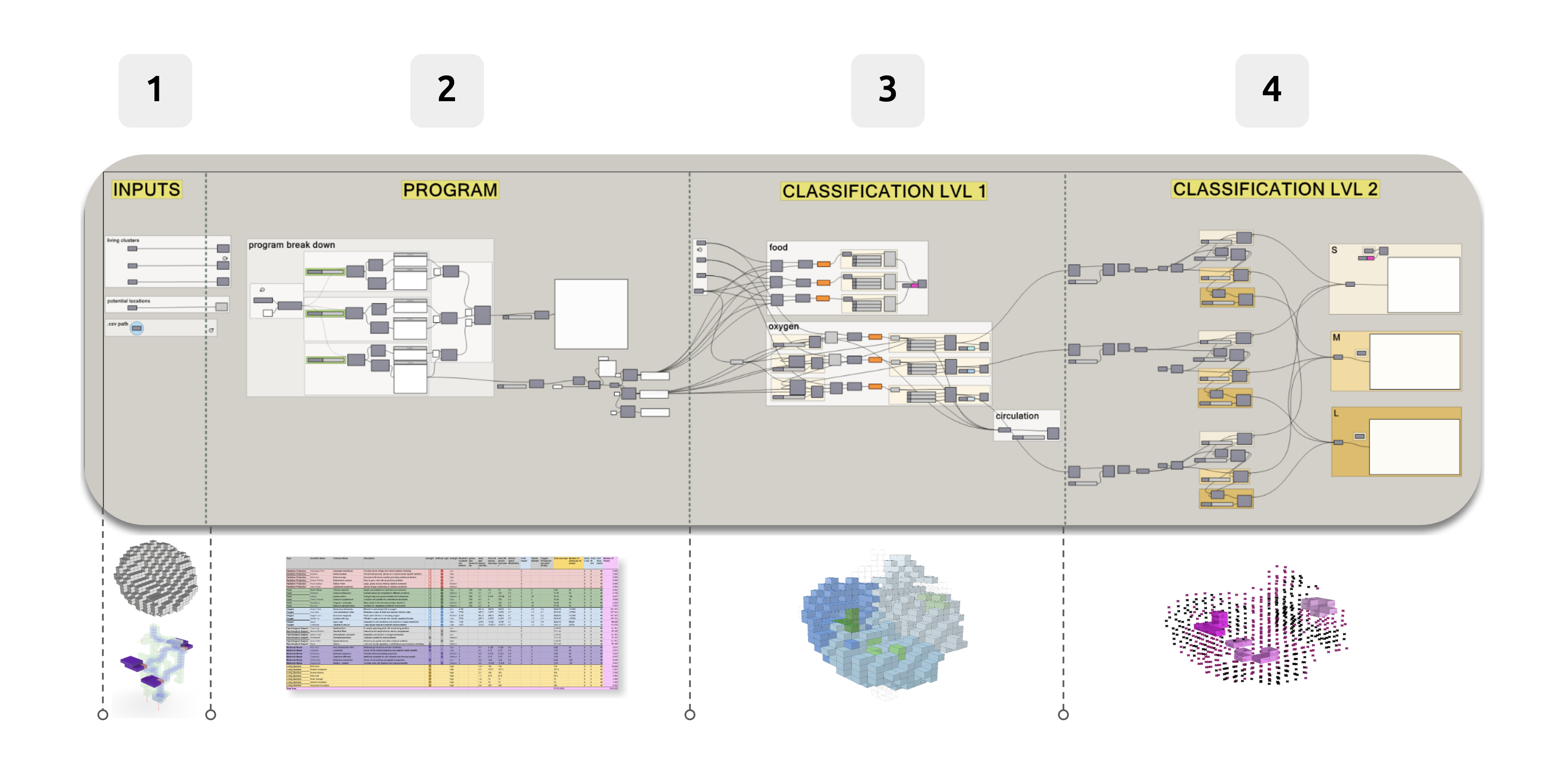
The computational methodology comprises four main steps: inputs, program breakdown, functional classification, and classification for Revit families. Inputs are defined first, followed by the program in CSV format. The program is then broken down to determine the areas’ functions and attributes. Maintaining list structures is crucial for matching each voxel to its attributes. In the functional classification, points are culled to define clusters for different plant categories. Each living unit corresponds to one cluster. For instance, for 50 people, three clusters are represented by the three blue shades.
Project Elements
The final Revit federated model is composed of 6 main parts:
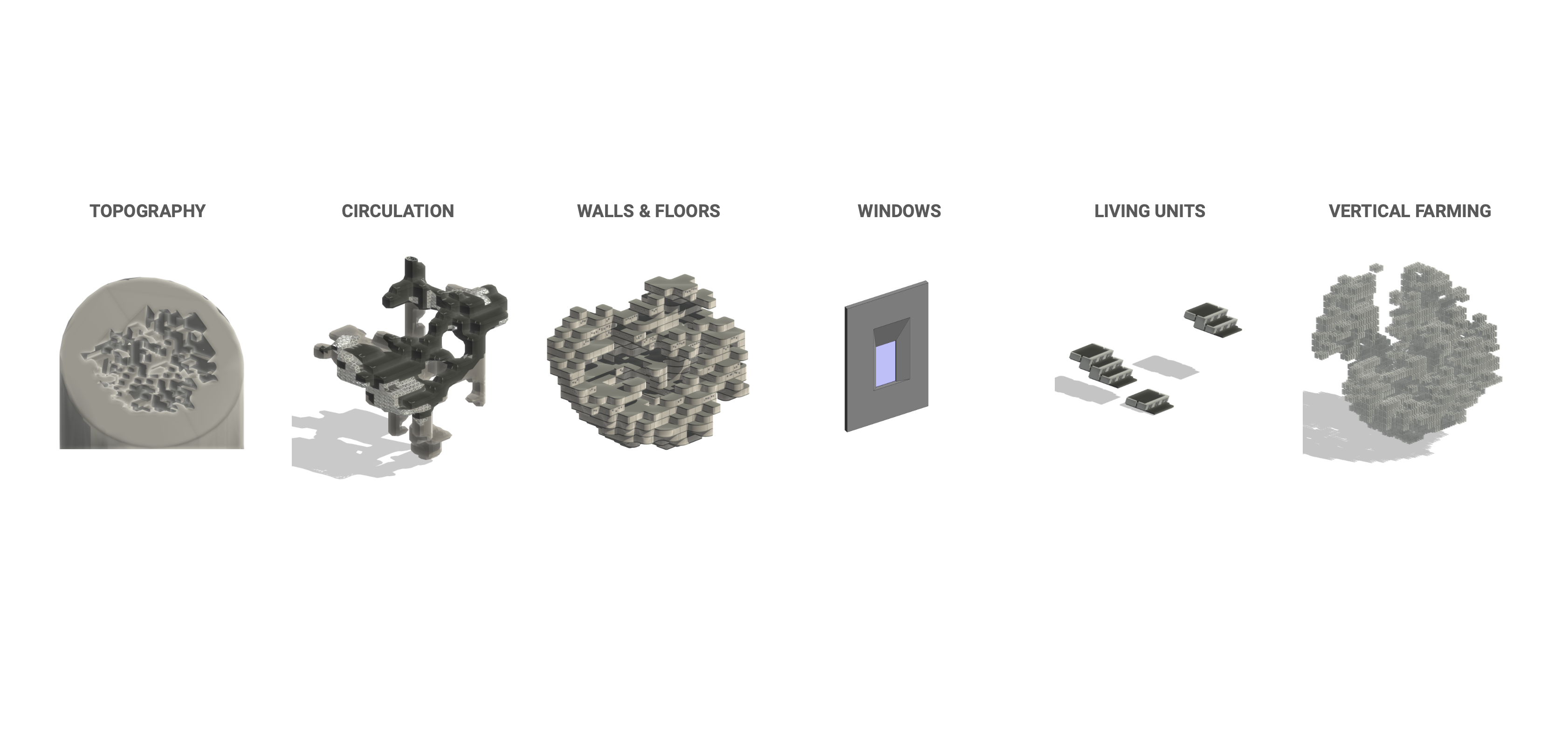
Topography
Bring the Topography into the model.
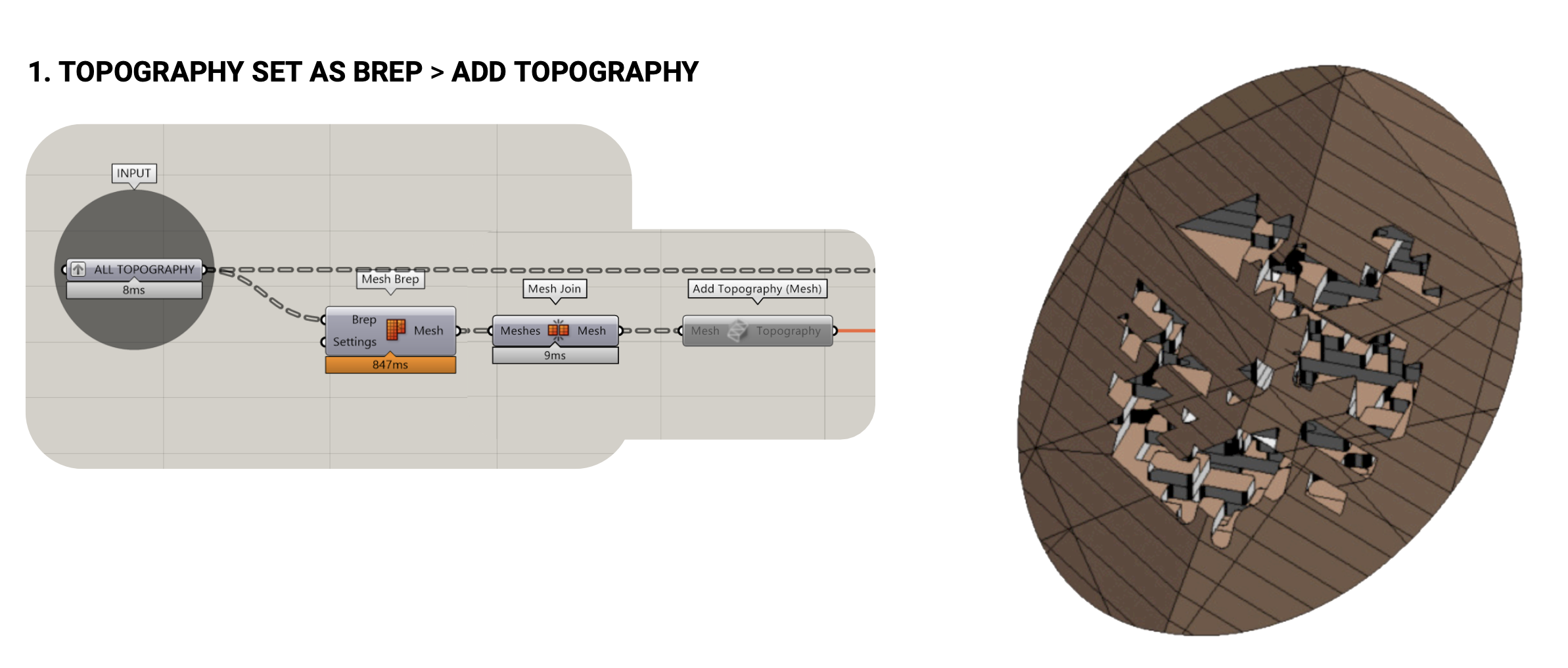
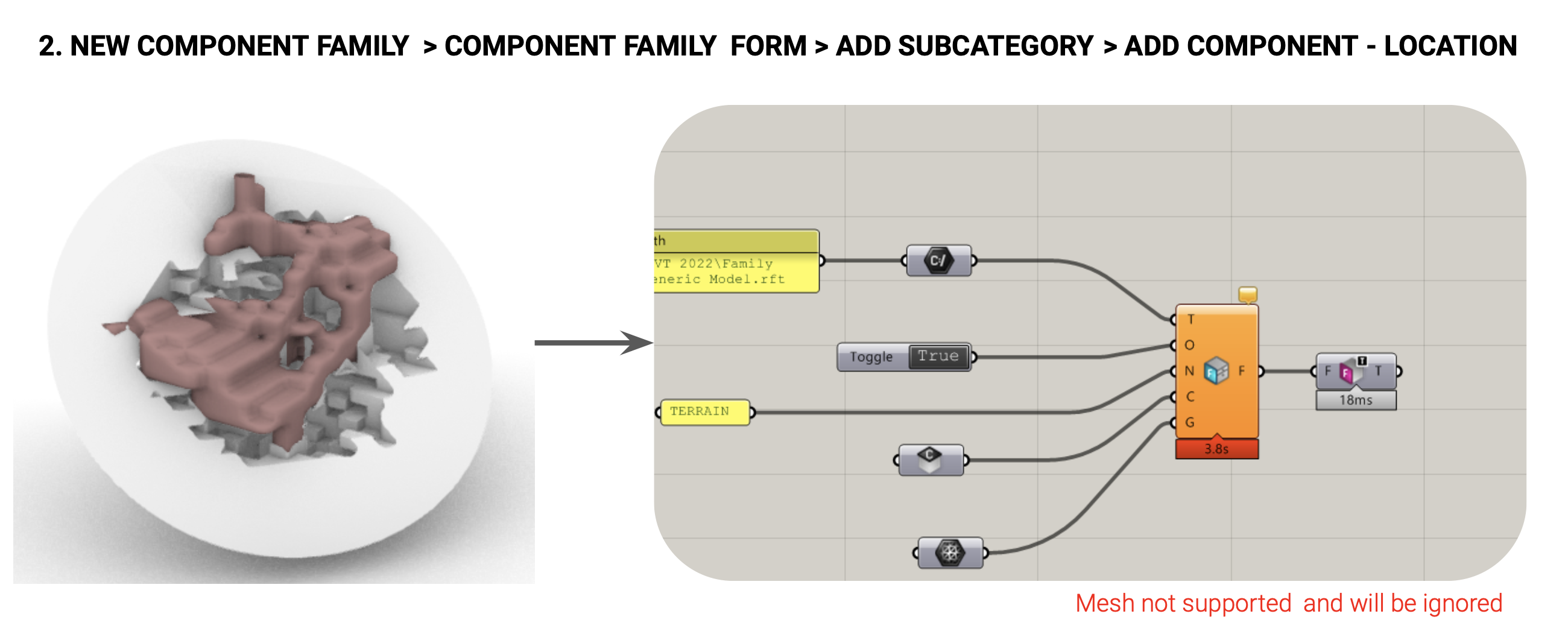
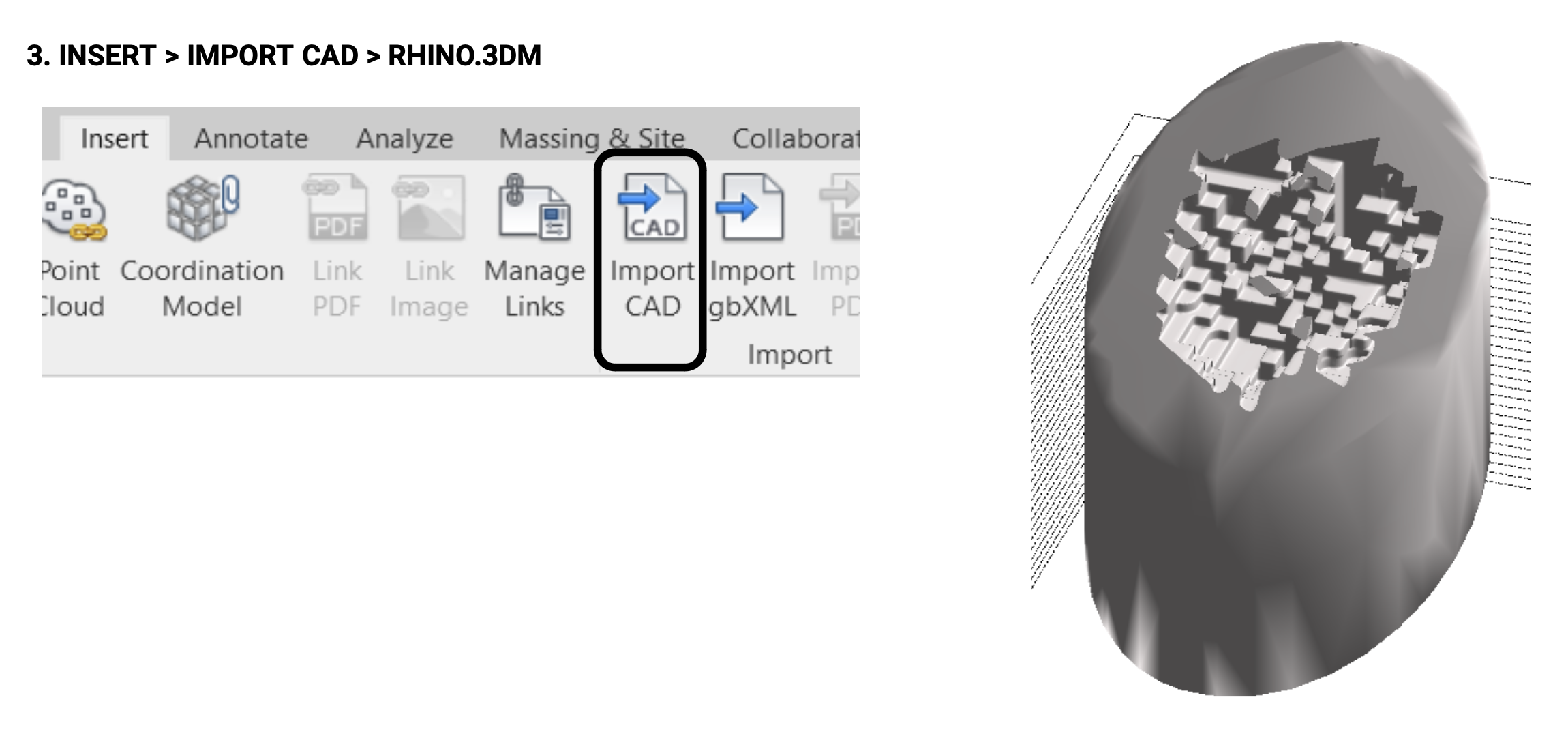
Circulation Envelope Paneling
Six different adaptive families are created using a mix of type and instance parameters for the panelling of the circulation envelope.
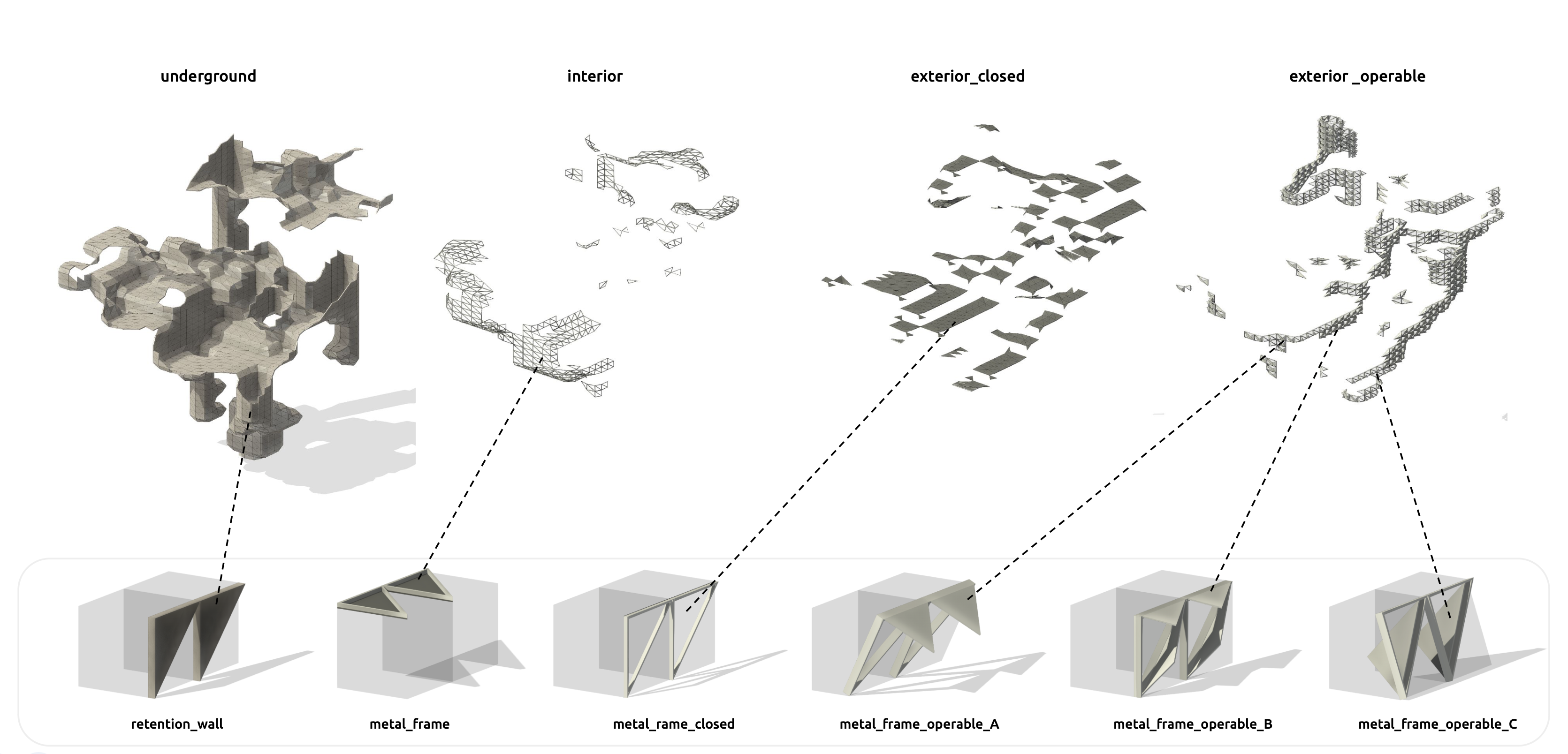
Wall and Floors
A 3D print protective wall is being proposed, with each segment designed as a one-meter thick loop for the 3D printer. Curve boundaries are extracted from Rhino, facilitating the easy generation of the native wall.
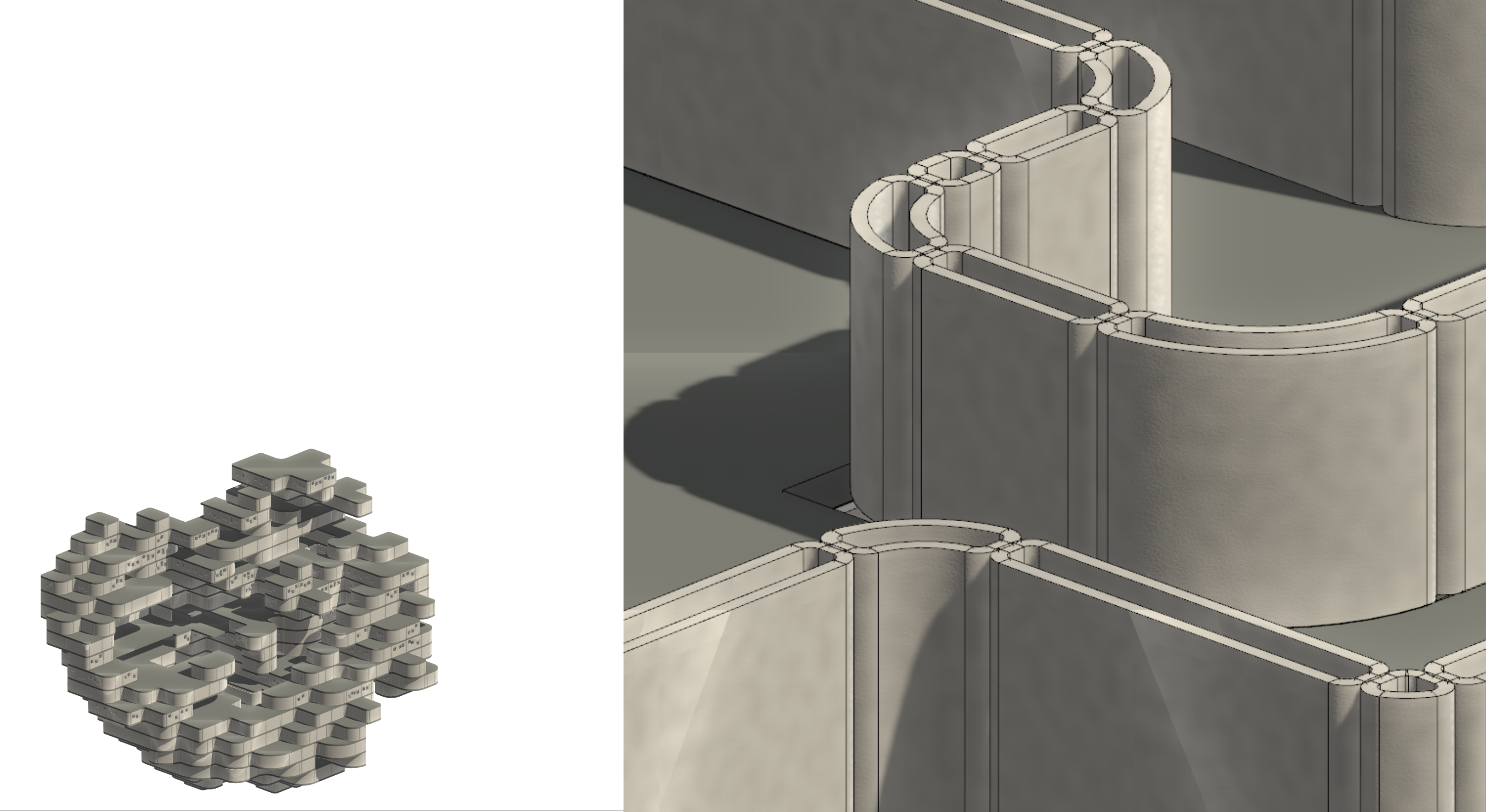
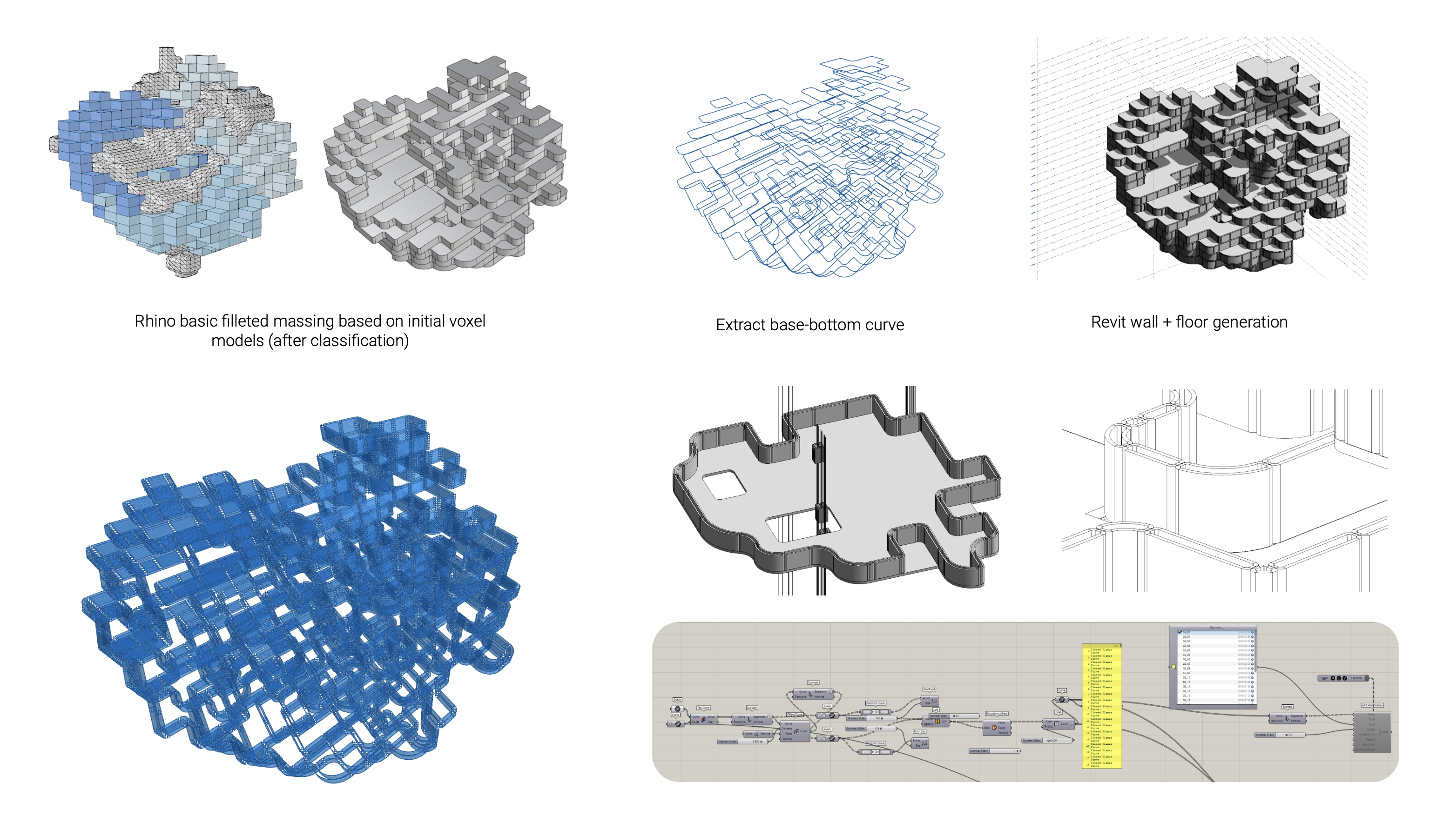
Windows
A simple Revit family is created and inserted into the wall. The height of the point location for these elements is randomly selected to generate a vivid image of the inhabitants.
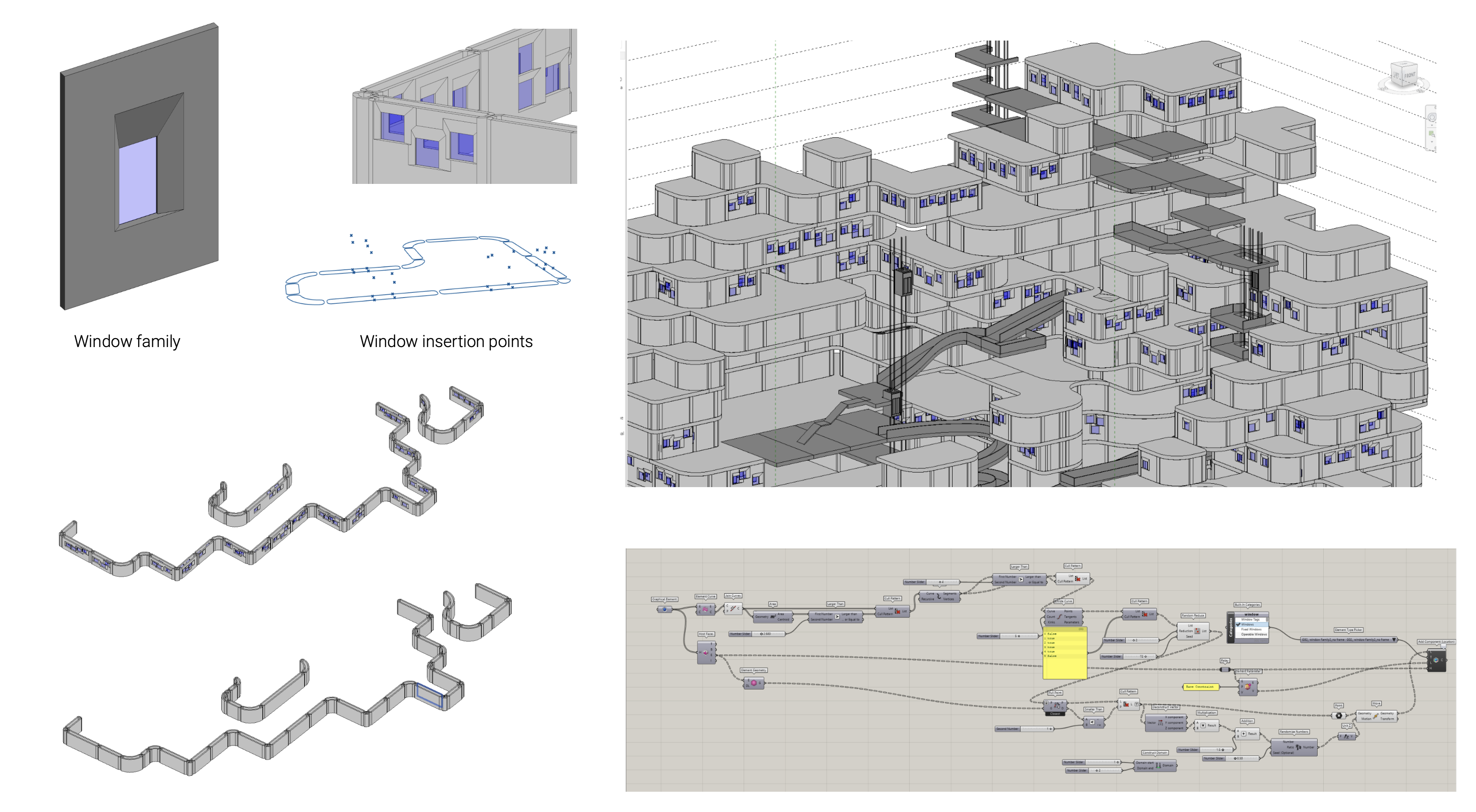
Living Clusters
Six Revit families containing Rhino geometry were created, with subcategories added to enhance control over the visibility graphics.

Vertical Farming
In our plant database, we have divided our plants’ height into 3 categories: small, medium, and large. We designed our hydroponic system to fit these categories and use less space as possible
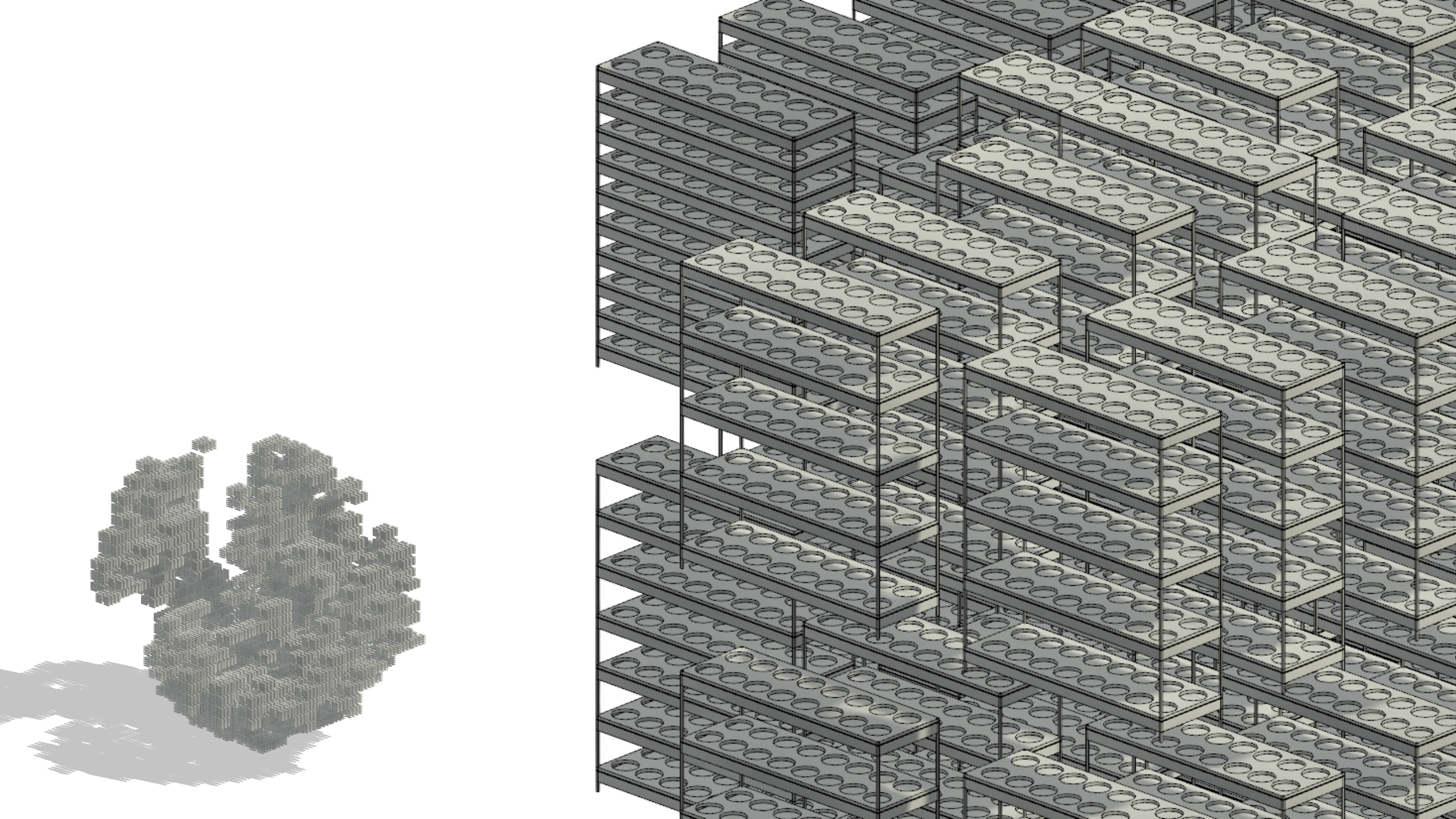
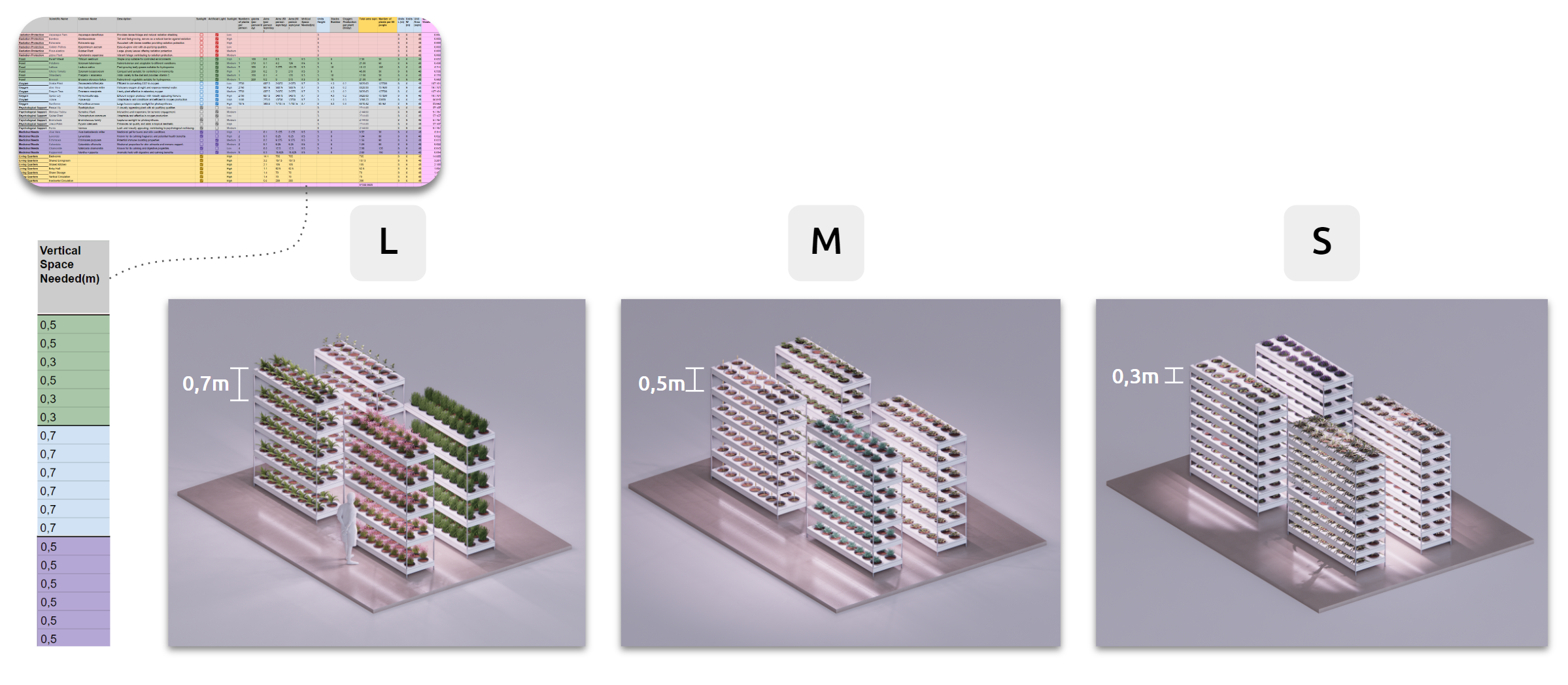
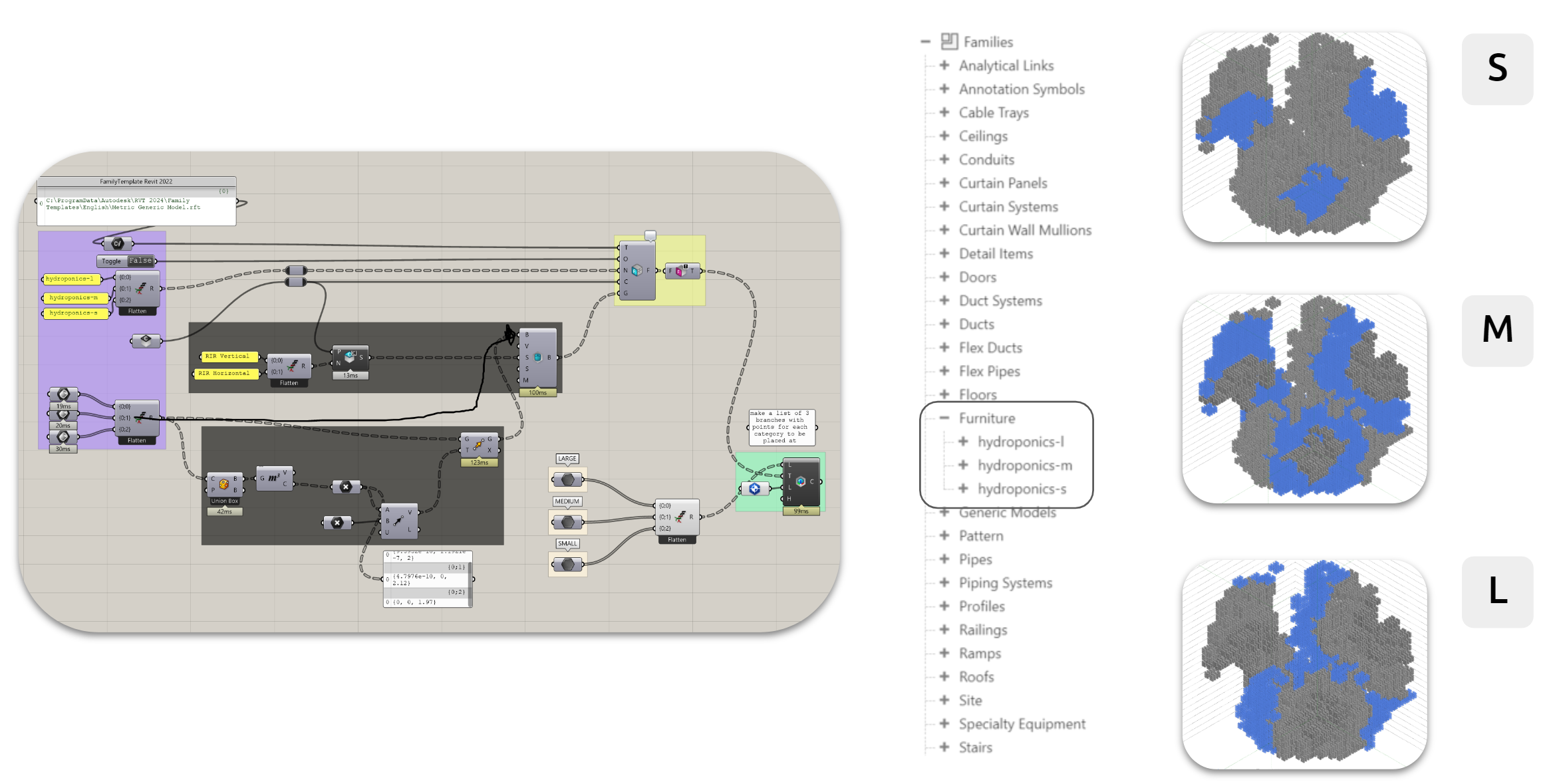
Here, the 3 clusters are visible in the 3 shades of blue. Each cluster contains an equal number of small, medium, and large plants. Three distinct Revit families were created to accommodate our hydroponic system. The shelves for the hydroponics were designated as native Revit furnishings

.
Collaboration Setup
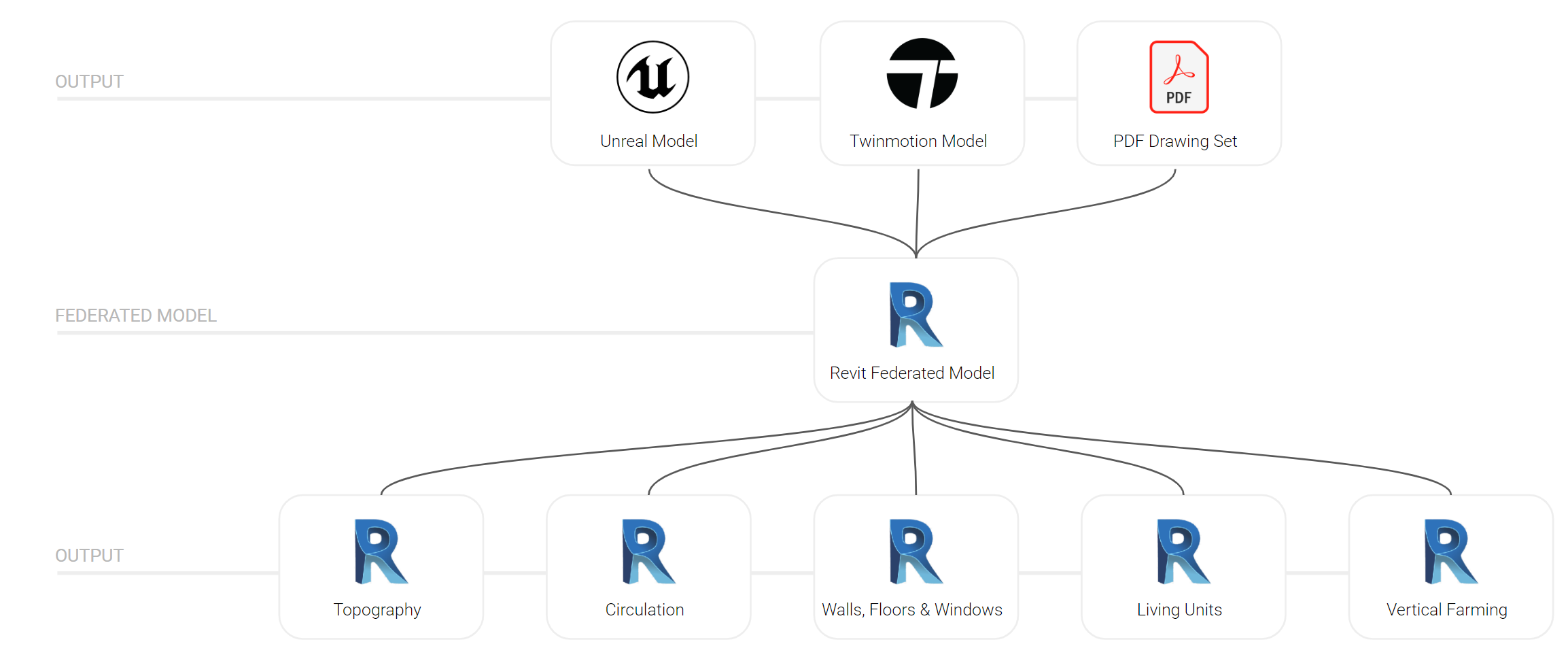
Due to the inability to establish a proper collaborative Revit session, five different Revit files, all linked to a separate Revit Federated file, were utilized. This arrangement allowed for parallel work to be conducted.
Parameters
Utilizing shared parameter files enabled the application of filters to the elements and the generation of schedules. This functionality proved particularly useful, given 5 linked Revit files. Type and instance parameters govern the geometry of certain elements: panel depth is controlled by a type parameter, while panel frame thickness is controlled by instance parameters. A combination of filters is utilized for custom filtering and colouring the elements.
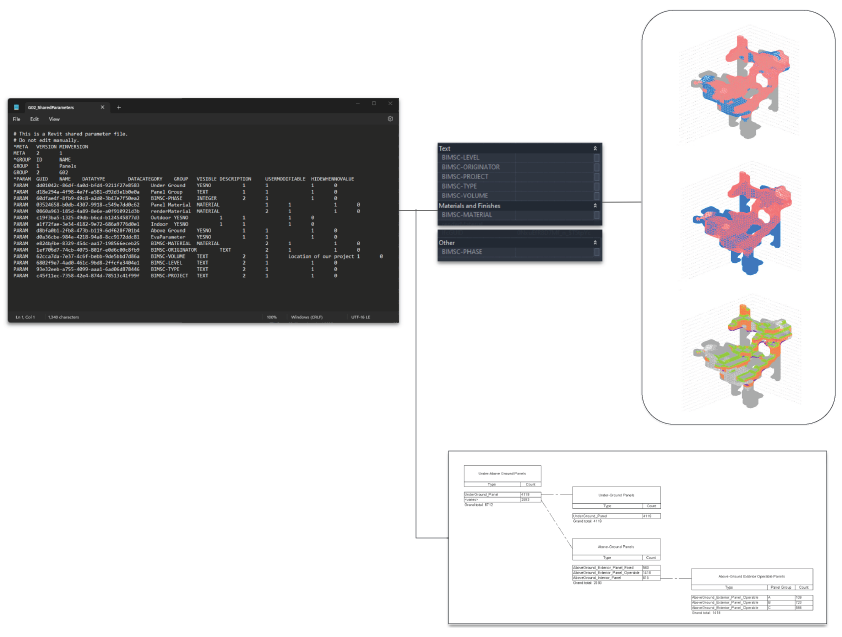
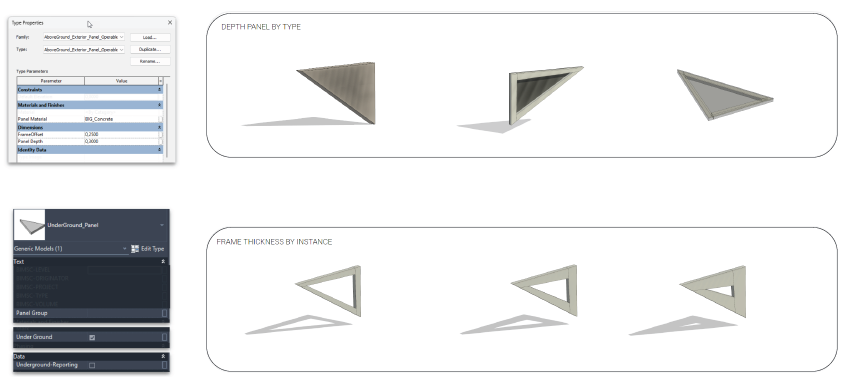
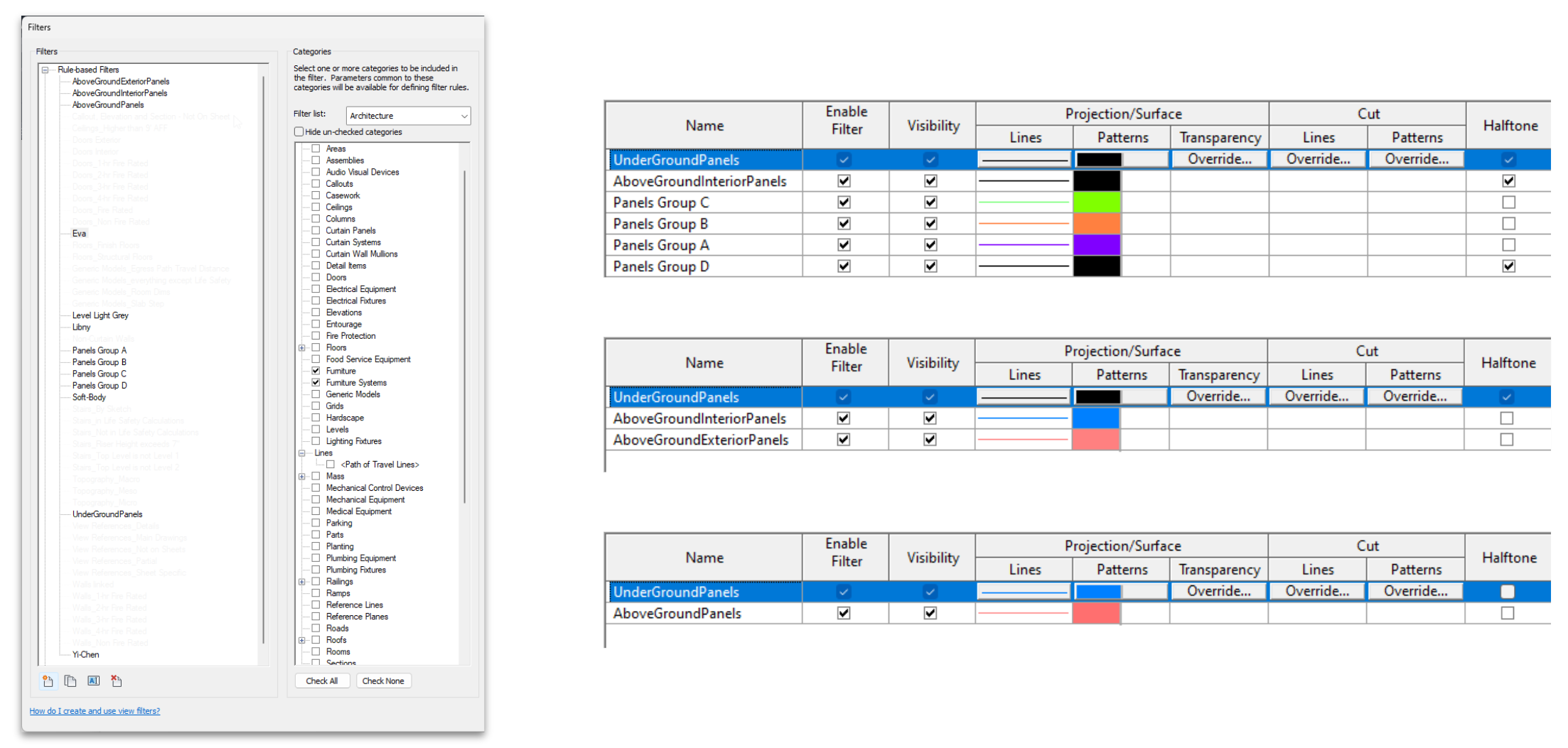
Revit Drawings








